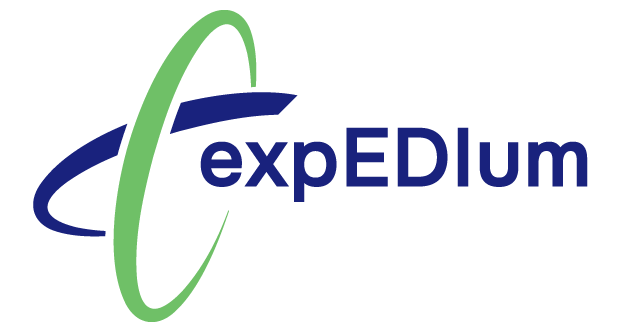Medical billing is a complex process that requires careful attention to detail. To ensure accurate reimbursement, healthcare providers and medical coders often utilize modifiers. Modifiers are two-digit codes added to procedure codes to provide additional information about the services rendered.
Modifiers are used with CPT and HCPCS codes to furnish extra information regarding a medical procedure or service when processing a claim. Importantly, these modifiers do not alter the meaning of the code itself. In essence, they are applied when medical or surgical procedures and services become more intricate, signifying that the service was not provided exactly as described by the respective CPT or HCPCS code descriptor, while still being applicable to that code. The purpose of modifiers is to explain why a physician, or another qualified healthcare professional administered that specific service or procedure.
There are two types of medical coding modifiers:
- CPT Modifiers: These modifiers, copyrighted by the AMA® and updated annually, typically consist of two digits. They convey essential information for claims, such as whether multiple procedures were performed, the necessity of a particular procedure, the site of the procedure, the number of surgeons involved, and more.
- HCPCS Modifiers: HCPCS Level II modifiers, copyrighted and updated by the CMS, are alphanumeric, with the first character being a letter. Like CPT modifiers, they provide additional information about a procedure or service without redefining the nature of the service provided.
In this blog post, we will explore commonly used modifiers in medical billing, providing a simplified explanation of their purpose and impact on reimbursements.
- Modifier 22: Increased Procedural Services
Modifier 22 is used when a procedure requires additional work beyond the usual level of effort and complexity. This modifier is used to justify the need for increased reimbursement due to the extra time, skill, or difficulty involved in performing the procedure. When appending modifier 22, it is essential to provide sufficient documentation that supports the additional work performed.
- Modifier 25: Significant, Separately Identifiable Evaluation and Management (E/M) Service by the Same Physician on the Same Day
Modifier 25 is frequently used when a physician provides a separate and distinct E/M service to a patient on the same day as another procedure or service. This modifier allows providers to be reimbursed for both the procedure and the E/M service, as long as the E/M service was significant and separately identifiable. By appending modifier 25 to the E/M code, it indicates that the E/M service was beyond the usual preoperative and postoperative care associated with the procedure.
- Modifier 26: Technical Component (TC)
Another commonly used modifier is Modifier 26, which indicates that only the professional component of a service was provided. This modifier is primarily used when the technical component, such as the use of equipment or facility, is provided separately by another entity. By appending Modifier 26, healthcare professionals can indicate that they are billing only for their professional services, separate from the technical component.
- Modifier 33: Preventive Care
This modifier is appended to E/M service codes when a preventive service is provided, indicating that the purpose of the encounter was preventive rather than diagnostic or therapeutic. By using Modifier 33, providers can ensure that preventive services are reimbursed separately, as they are often covered at 100% by insurance plans.
- Modifier 50: Bilateral Procedure
When a medical procedure is performed on both sides of the body during the same session or encounter, modifier 50 is used to indicate that it was a bilateral procedure. This modifier ensures that providers receive appropriate reimbursement for the additional complexity and resources required when performing a procedure on both sides.
- Modifier 51: Multiple Procedures
Modifier 51 is used to indicate that multiple procedures were performed during the same session or encounter. It alerts the payer that the provider should receive a reduced reimbursement rate for the subsequent procedures performed. By appending modifier 51, it helps prevent the overpayment of claims by ensuring that each procedure is appropriately accounted for.
- Modifier 59: Distinct Procedural Service
Modifier 59 is used to identify procedures or services that are separate and distinct from other services performed on the same day. It indicates that the procedure was different in nature or performed at a different anatomic site. This modifier is crucial in avoiding claim denials due to the bundling of services. By appending modifier 59 to the distinct procedure, it distinguishes it from other procedures and increases the likelihood of reimbursement.
Conclusion
Understanding commonly used modifiers in medical billing is crucial for accurate reimbursement and avoiding claim denials. Modifiers such as 22, 25, 26, 33, 50, 51, and 59 play a significant role in communicating additional information about the services provided. By utilizing these modifiers correctly, healthcare providers can ensure fair reimbursement for their services and minimize the risk of claim rejections.
However, it’s important to note that the appropriate use of modifiers requires adherence to specific coding guidelines and documentation requirements set by insurance payers. Medical coders and billing professionals should stay updated on the latest coding rules and regulations to ensure compliance.
At iTech Workshop, our specialized team of billers and coders has undergone thorough training and gained vast expertise in utilizing modifiers effectively. We are dedicated to continuous improvement and actively pursue training opportunities to enhance our understanding of modifier usage. This empowers us to pinpoint the reasons behind claim denials, especially those related to coding issues. Through an iterative approach, we systematically address coding denials, resolving any problems in a structured manner. If you’re considering outsourcing your billing and coding services, feel free to reach out to us. We’ll be delighted to assist you!

